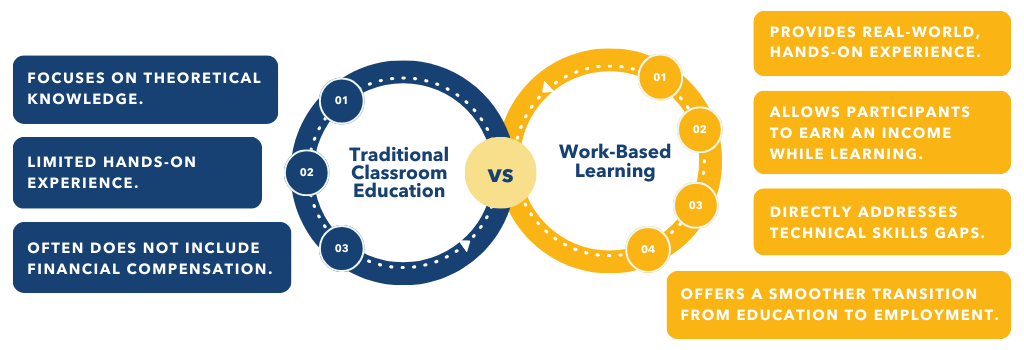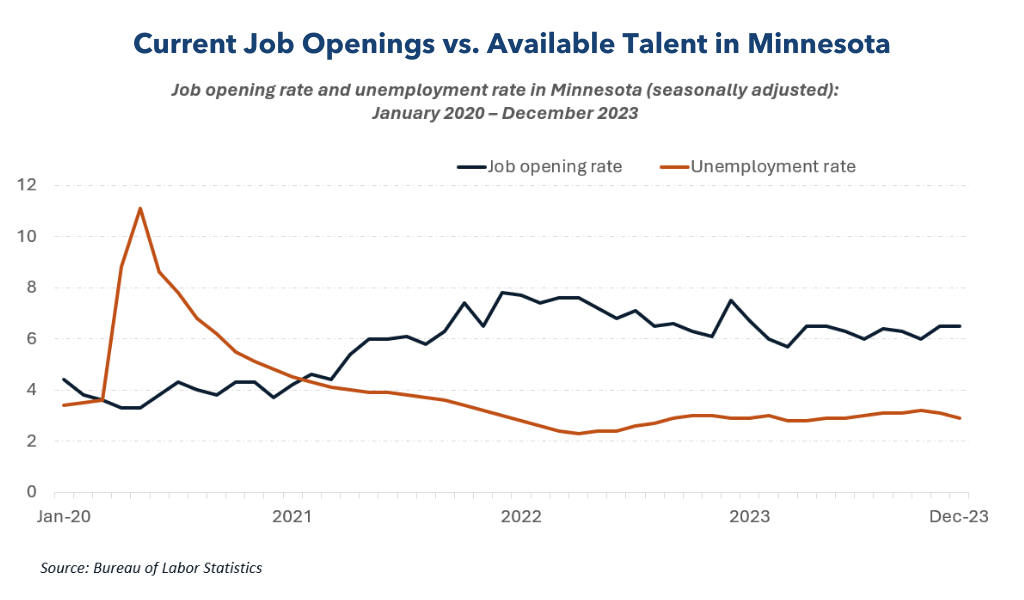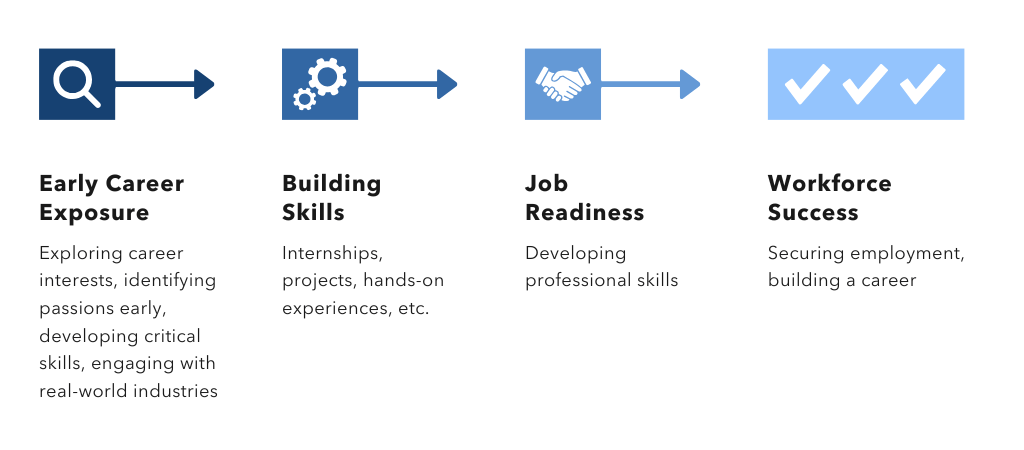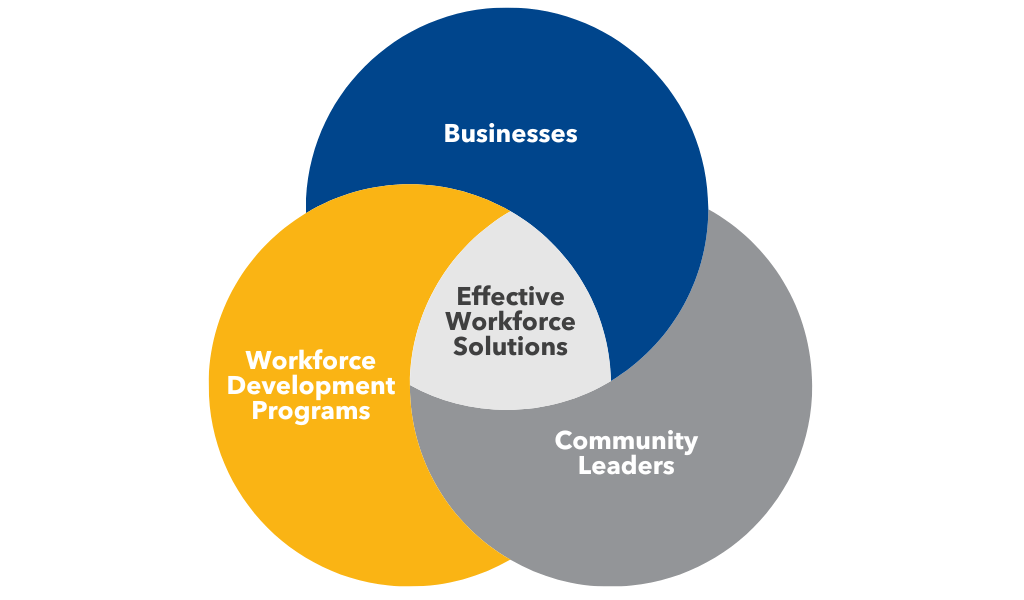12.06.24
Exploring Workforce Solutions Across North Dakota and Minnesota
By Hannah Anderson, Director of Content Strategy, The Chamber

At The Chamber’s Workforce Forum on Nov. 21, Katie Ralston Howe, Director of Workforce Division at the North Dakota Department of Commerce, and Julie Sachs, Field Operations Area Manager for the Minnesota Department of Employment and Economic Development, shared their perspectives on workforce solutions across North Dakota and Minnesota.
Both states face unique, interconnected workforce challenges, and the forum highlighted innovative strategies to help businesses shape sustainable workforce solutions. Keep reading to explore actionable insights for navigating these pressing issues.
Paid Work-Based Learning: A Key Solution for Workforce Development
Paid work-based learning provides individuals with the chance to gain hands-on experience while receiving financial support. Integrating work experience into the educational process addresses technical skills gap and also prepares workers for real-world success. They offer a practical approach to workforce development, allowing individuals to build skills while easing financial barriers, making the transition from education to employment smoother.
The Benefits of Paid Work-Based Learning

Paid work-based learning opportunities offer a win-win for businesses and workers, bridging the skills gap while providing financial support to participants.
Talent Attraction: A Priority for Workforce Solutions
Attracting talent is a pressing issue for both states. In Minnesota, the situation is particularly urgent, with two job openings for every one person seeking work. To address this imbalance, the state is prioritizing talent attraction and robust training programs.
North Dakota’s Find the Good Life initiative has emerged as a key player in attracting people to the state, focusing not only on drawing in workers but also on preparing local students to meet workforce demands.

Talent attraction is about more than just filling positions—it's about aligning workforce needs with the aspirations of the next generation.
Early Career Exposure: A Critical Workforce Solution
Introducing career exploration early in students' education is another critical piece of the workforce solution. Providing students with exposure to a variety of careers, both within the state and across industries, allows them to better understand their interests and develop skills to succeed in the workforce. These early experiences help students realize they don’t have to leave their home state to pursue fulfilling careers. Career exposure programs empower students to make informed decisions about jobs they are passionate about while fostering a sense of connection to the local job market.
The Path from Career Exploration to Workforce Success

Early career exploration allows students to identify their passions and chart a path toward success, right in their home state.
Collaboration for Sustainable Workforce Solutions
Ralston Howe and Sachs emphasize the importance of collaboration between businesses, communities and workforce development programs to ensure that workforce strategies align with real-world employer needs. By working together, stakeholders can create targeted initiatives that are not only effective but sustainable. The ongoing collaboration ensures that workforce data accurately reflects the demand for specific skills and that strategies evolve to meet changing industry requirements.
Collaboration for Workforce Solutions

Collaboration across sectors is essential for developing workforce solutions that are relevant, sustainable and aligned with local needs.
The Bottom Line: A Unified Approach to Workforce Development
As workforce needs continue to evolve, innovative solutions like paid work-based learning, early career exposure and collaborative efforts between communities and businesses are key to addressing gaps and preparing workers for the future. These strategies not only attract and retain talent but also build a stronger, more resilient workforce for North Dakota, Minnesota and beyond.
take the next step
Sign up for our free, 3-part training series, Inclusion Insights today!
SHARE
More Stories
Upcoming Events
